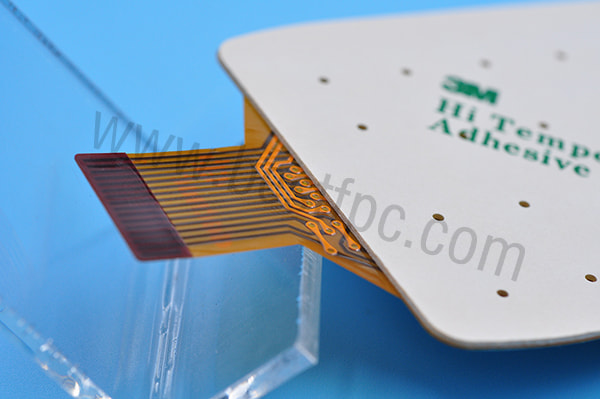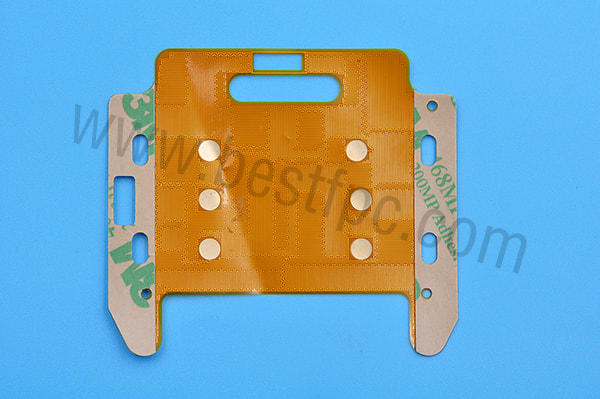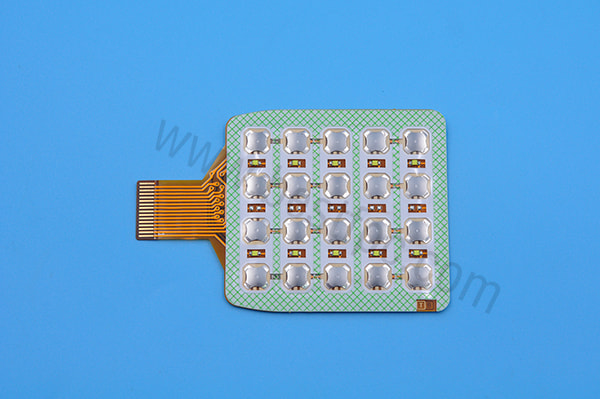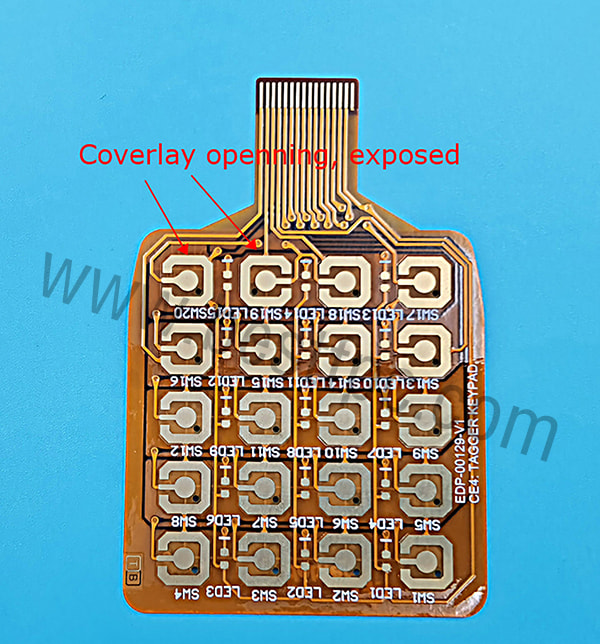Applications for flex circuits boards incorporating dome switches are extremely common now. The combination allows for reduced space requirements and design flexibility in many handheld devices. When comes to a FPC design, or some extremely complex rigid-flex circuit board designs. Any additional connectors or cabling between a rigid PCB and the dome switch area is eliminated thus saving space/weight and additional assembly costs. Then more and more applications require a dome switch mounted to a flexible circuit board.
Gerber Layout Requirements\
Creating the Gerber data set for a flex PCB applications is straightforward with only a couple of additional considerations. The footprint for the dome switch is defined by the supplier and will vary depending upon the specific switch selected.
A key element is to define the coverlay opening so that the entire footprint is exposed rather than having independent openings for the center and surrounding contacts. This prevents the taller height of the adjacent coverlay from interfering with the operation of the switch ensuring a reliable actuation. Also, having two separate openings is not manufacturable when using a polyimide coverlay or soldermask.
A second element is including the vent hole. This prevents air entrapment which will negatively impact the switch operation/feel and potentially cause the overlay layers to separate from the flex circuit. It is preferred to have the vent hole as a plated hole in a 2-layer flex design. For a 1-layer design, it will be non-plated.
How the flex circuit board will be mounted in the assembly and what the sealing “IP” rating requirements are, to prevent the ingress of moisture, dirt and etc. This will define the amount of spacing required from the edge of the switch footprint to the outline of the flex circuit. 3mm spacing is a typical minimum spacing that will allow the dome switch overlay to seal to the flex circuit and may accommodate and additional sealing methods used in the final enclosure. More space may be required depending upon the application.
Flex Circuit Board Materials
The flex circuit board materials required for a specific design are usually defined by design elements other than that required to meet the dome switch specifications. In most designs, a flex tail is incorporated which then extends out to then into a connector on the control PCB. The bend requirements of this tail area, if excessively tight or complicated, we suggest to use of thinner than standard flex materials to reliably meet the minimum bend radius. There are wide variety of materials available. If the tail is to plug into a ZIF connector then an added polyimide stiffener, in the ZIF contact finger area, is required to meet the connector specifications. If the connector is an SMT or PTH male/female header type, then an FR4 stiffener will be needed to support the connector.
Stiffener & PSA Requirements
Many flex circuits with dome switches require additional stiffeners or PSAs, pressure-sensitive adhesives. An additional stiffener may be necessary to provide support for the force applied when actuating a dome switch if the enclosure is not configured to do so. These stiffeners would reside behind the switch area and be thick enough, 1mm - 1.5 mm, so as not to allow any deflection.
The ressure-sensitive adhesive resides behind the switch area and can be used in conjunction with a stiffener if a specific thickness is required to fit the enclosure. The most common PSAs used are 3M 467 and 3M 478 for flex circuits that do not have any component assembly and 3M 9077 for designs that require SMT assembly. Other adhesives are also available for unique requirements.


The FPC with metal dome design process is not overly complex but does have several elements that need to be evaluated and incorporated to ensure a successful design. Best Technology can support a dome switch project by providing complete or partial design services as part of our user interface product line. Please feel free to contact us at sales@www.bestfpcs.com if you have any questions or require design support in developing a dome-switch-based flex circuit.










 2023-02-25
2023-02-25
 BEST
BEST



.png)
.png)
.png)
.png)

.png)

